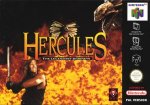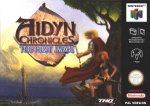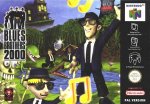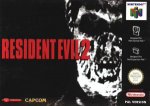Website Temporary Closed
Nintendo 64
The Nintendo 64, commonly called the N64, is Nintendo's third home video game console. The N64 was released on June 23, 1996 in Japan, September 29, 1996 in North America and Puerto Rico, 1 March 1997 in Europe/Australia and September 1, 1997 in France. It was released with only two launch games in Japan and North America (Super Mario 64 and PilotWings 64) while Europe had a third launch title in the form of Star Wars: Shadows of the Empire (which was released earlier in the other markets). The Nintendo 64 cost $199 at launch in the United States.
The N64 was first publicly introduced on November 24, 1995 as the Nintendo Ultra 64 at the 7th Annual Shoshinkai Software Exhibition in Japan (though preview pictures from the Nintendo "Project Reality" console had been published in American magazines as early as June, 1993). The first published photos from the event were presented on the web via coverage by Game Zero magazine two days after the event. Official coverage by Nintendo soon followed a few weeks later on the nascent Nintendo Power website, and then in volume #85 of their print magazine.
[collapse collapsed title=read more...]
During the developmental stages the Nintendo 64 was referred to by its code name, Project Reality. The name Project Reality came from the speculation within Nintendo that this console could produce CGI on par with then-current supercomputers. Once unveiled to the public the name changed to Nintendo Ultra 64, referring to its 64-bit processor, and Nintendo dropped "Ultra" from the name on February 1, 1996, just five months before its Japanese debut due to the word "Ultra" being copyrighted to another company.
After first announcing the project, two companies, Rareware (UK) and Midway (USA), created the arcade games Killer Instinct and Cruis'n USA which claimed to use the Ultra 64 hardware. In fact, the hardware had nothing to do with what was finally released; the arcade games used hard drives and TMS processors. Killer Instinct was the most advanced game of its time graphically, featuring pre-rendered movie backgrounds which were streamed off the hard drive and animated as the characters moved horizontally.
Nintendo touted many of the system's more unusual features as groundbreaking and innovative, but many of these features had in fact been implemented before. The first game console to bill itself as "64-bit" was actually the Atari Jaguar (although the truth of this is disputed, as the Jaguar merely had two 32-bit processors- albeit its graphics processor was 64-bit). The Vectrex in fact had introduced analog joysticks, while the first to feature four controller ports was the Bally Astrocade. Regardless, the Nintendo 64 was the first popular system to have these features.
The system was designed by Silicon Graphics Inc., and features their trademark dithered 32-bit graphics. The early N64 development system was an SGI Indy equipped with an add-on board that contained a full N64 system.
The Nintendo 64 was the last mainstream home video game console to use ROM cartridges to store its games. (Although the last real cartridge based system to have still continued production was SNK's Neo Geo MVS hardware until 2003) Nintendo's choice had several advantages:
-
ROM cartridges have very fast load times in comparison to disc based games. This can be observed from the loading screens that appear in many PlayStation games but are virtually non-existent in N64 versions.
-
ROM cartridges are difficult and expensive to duplicate, thus resisting piracy (albeit at the expense of lowered profit margin for Nintendo). While unauthorized interface devices for the PC were later developed, these devices are rare when compared to a regular CD drive as used on the PlayStation.
-
It is possible to add specialized support chips (such as coprocessors) to ROM cartridges, as was done on some Super Nintendo games.
-
4. Most cartridges store individual profiles and game progress on the cartridge itself, eliminating the need for separate and expensive memory cards. Storing data at first required a cartridge battery whose energy would diminish over time, though the battery generally lasted for years, and in subsequent games EEPROMs were used instead.
While Nintendo chose the cartridge format for the N64, the company originally signed a contract with Sony in 1988 to develop a CD-ROM drive add-on for the SNES. When Hiroshi Yamauchi read the (already signed by Nintendo) original 1988 contract between Sony and Nintendo and learned that it allowed Sony 25% of the profits from the machine, he was furious. He deemed the contract totally unacceptable, and secretly cancelled all plans for a joint Nintendo-Sony SNES CD attachment. Indeed, instead of announcing their partnership, at 9 AM the day of the CES, Nintendo chairman Howard Lincoln stepped onto the stage and revealed that they were now allied with Phillips, and were planning on abandoning all the previous work Nintendo and Sony had accomplished. Lincoln and Minoru Arakawa had (unbeknownst to Sony) flown to Phillips headquarters in Europe and formed an alliance.
In addition to the CD-ROM add on, Sony would release a combination Super NES/CD-ROM system in one unit, which would have been called the PlayStation. Initially, Nintendo's abandonment of the joint project caused Sony to consider halting their research, but ultimately the company decided to use what they had developed so far and make it into a complete, stand alone console. This led to Nintendo filing a lawsuit claiming breach of contract and attempted, in U.S. federal court, to obtain an injunction against the release of the PlayStation, on the grounds that Nintendo owned the name. The federal judge presiding over the case denied the injunction.
Graphically, benefits of the Nintendo cartridge system were mixed. While N64 games generally had higher polygon counts, the limited storage size of ROM carts limited the amount of available textures, resulting in games which had a plain and flat-shaded look. Later cartridges such as Resident Evil 2 featured more ROM space, which demonstrated that Nintendo 64 was capable of detailed in-game graphics when the media permitted, but this performance came late in the console war and at a high price.
At that time, competing systems from Sony and Sega (the PlayStation and Saturn, respectively) were using CD-ROM discs to store their games. These discs are much cheaper to manufacture and distribute, resulting in lower costs to third party game publishers. As a result many game developers which had traditionally supported Nintendo game consoles were now developing games for the competition because of the higher profit margins found on CD based platforms.
The cartridge vs. disc debate came to an infamous climax during the release of Final Fantasy VII. Despite the fact that all six previous Final Fantasy games had been published on Nintendo systems, the series' producer, Squaresoft, chose to release Final Fantasy VII on the Sony PlayStation. This incident provided a highly-publicized denunciation of Nintendo's cartridge-based system which caused negative publicity for Nintendo. The incident also led to Square and Nintendo not working together on a project until Final Fantasy: Crystal Chronicles was released on the Nintendo Gamecube in 2004.
The cost of producing an N64 cartridge was far higher than producing a CD: one gaming magazine at the time cited average costs of twenty-five dollars per cartridge, versus 10 cents per CD. Publishers had to pass these higher expenses to the consumer so Nintendo 64 games tended to sell for slightly higher prices than PlayStation games did. While most PlayStation games rarely exceeded $50, N64 titles could reach $80.
Despite the controversies, the N64 still managed to support many popular games, giving it a long life run. Nintendo 64 took second place for its generation of consoles while the PlayStation finished first, with 40% and 51% of the market respectively. Much of this success was credited to Nintendo's strong first-party franchises, such as Mario and Zelda, which had strong name brand appeal yet appeared exclusively on Nintendo platforms. The N64 also secured its share of the mature audience thanks to GoldenEye 007, Resident Evil 2, Shadow Man, Doom 64 and Quake II.
In 2001, the Nintendo 64 was replaced by the disc-based Nintendo GameCube, although even with this system they refused to use mainstream CD/DVD technology, opting for the DVD-based but incompatible GameCube Optical Disc. The Nintendo Revolution uses "12 cm discs" for storage, which are just encrypted DVDs, thus making it the first Nintendo console to use a standardized storage format.
[/collapse]
- HOME


- PRODUCTS

- 3DO
- Amiga CD32
- Amstrad GX4000
- Atari 2600
- Atari 7800
- Atari Jaguar
- Atari Jaguar CD
- Atari Lynx
- Bandai Wonderswan
- Coleco
- Colecovision
- Famicom
- Famicom Disk System
- Grandstand
- JAMMA
- Mattel Intellivision
- MB
- Microsoft Xbox
- MSX
- Neo Geo AES
- Neo Geo CD
- Neo Geo MVS
- Neo Geo Pocket
- Nintendo 64
- Nintendo Game and Watch
- Nintendo Gameboy
- Nintendo Gameboy Advance
- Nintendo Gameboy Colour
- Nintendo Gamecube
- Nintendo NES
- Nintendo Virtual Boy
- PC Engine
- PC Engine CD
- Philips CDI
- Sega 32X
- Sega Dreamcast
- Sega Game Gear
- Sega Genesis
- Sega Master System
- Sega Mega CD
- Sega Megadrive
- Sega Nomad
- Sega Saturn
- Sony Playstation
- Sony Playstation 2
- Super Famicom
- Super Nintendo
- Texas Instruments
- Tiger Game Com
- Tomy
- Vectrex
- Japanese Video Game Imports
-

- MODIFICATIONS

- Switchless Modification
- Modification Sega 32X
- Modification Sega Dreamcast
- Modification Sega Megadrive
- Modification Neo Geo AES
- Modification Neo Geo CD
- Modification Nintendo NES
- Modification Sega Master System
- Modification Sega Mega-CD
- Modification Sega Nomad
- Modification Sega Saturn
- Modification Super Nintendo
-

- TECHNICAL INFO


- NEWS


- ABOUT US


- MEMBERS


- CONTACT US


Log on
x
Just In!












 Save time
Save time